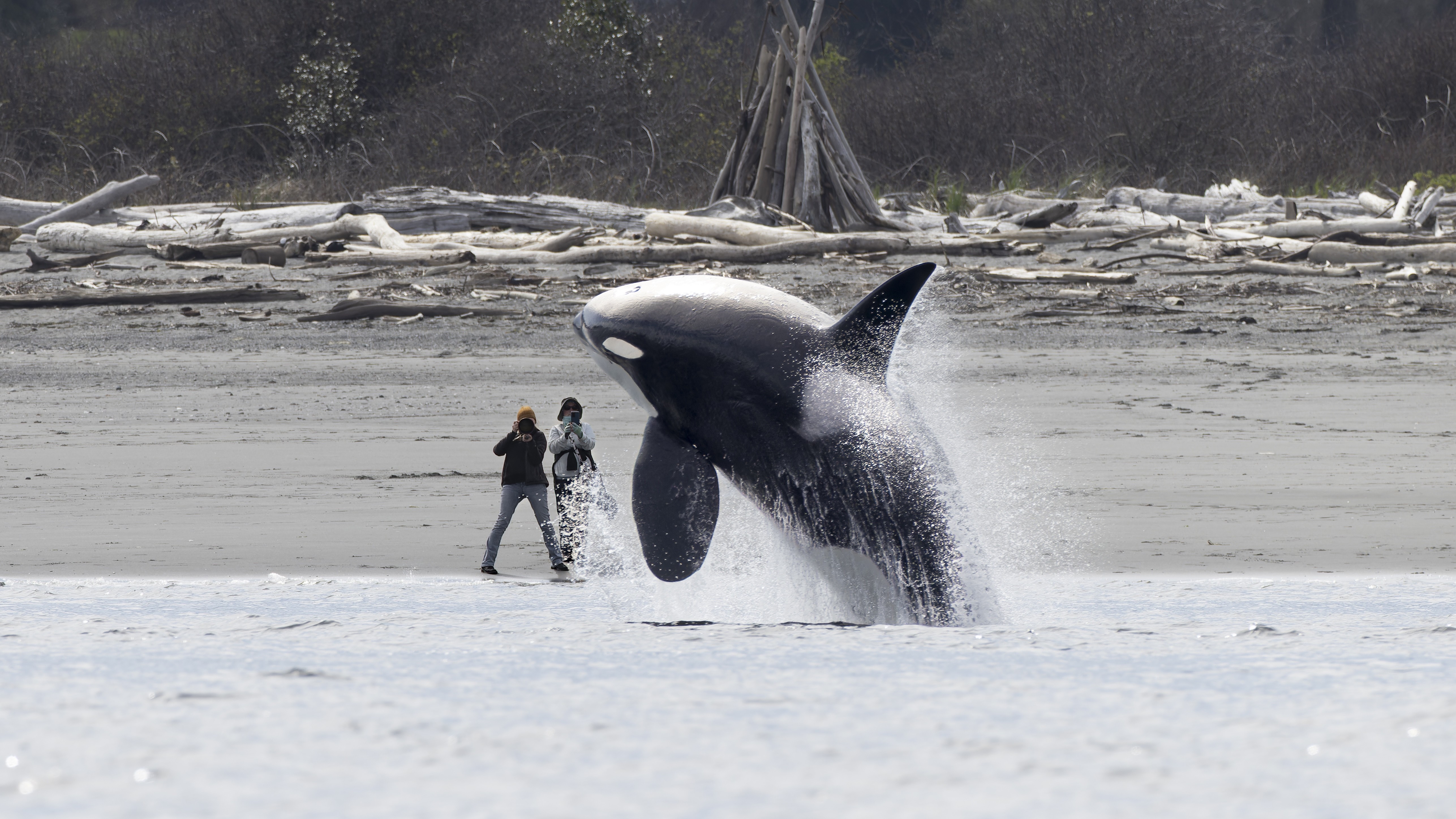 © Yifan Ling / Ocean Photographer of the YearFinalist, Human Connection. “On April 1, 2024, more than 20 Bigg’s orcas entered Puget Sound together. At Point No Point, Washington, one of my friends was on the beach watching as the pods passed, when T099C “Barakat”—a male orca—suddenly began breaching repeatedly near the beach. At one moment, he leaped from the water just meters away from my friend. Although her lens was too long for the closeness, I happened to be offshore and captured the perfect shot for her, and this shot perfectly reflected the connection between the wild orcas and land-based whale watchers in Puget Sound.”
© Yifan Ling / Ocean Photographer of the YearFinalist, Human Connection. “On April 1, 2024, more than 20 Bigg’s orcas entered Puget Sound together. At Point No Point, Washington, one of my friends was on the beach watching as the pods passed, when T099C “Barakat”—a male orca—suddenly began breaching repeatedly near the beach. At one moment, he leaped from the water just meters away from my friend. Although her lens was too long for the closeness, I happened to be offshore and captured the perfect shot for her, and this shot perfectly reflected the connection between the wild orcas and land-based whale watchers in Puget Sound.”
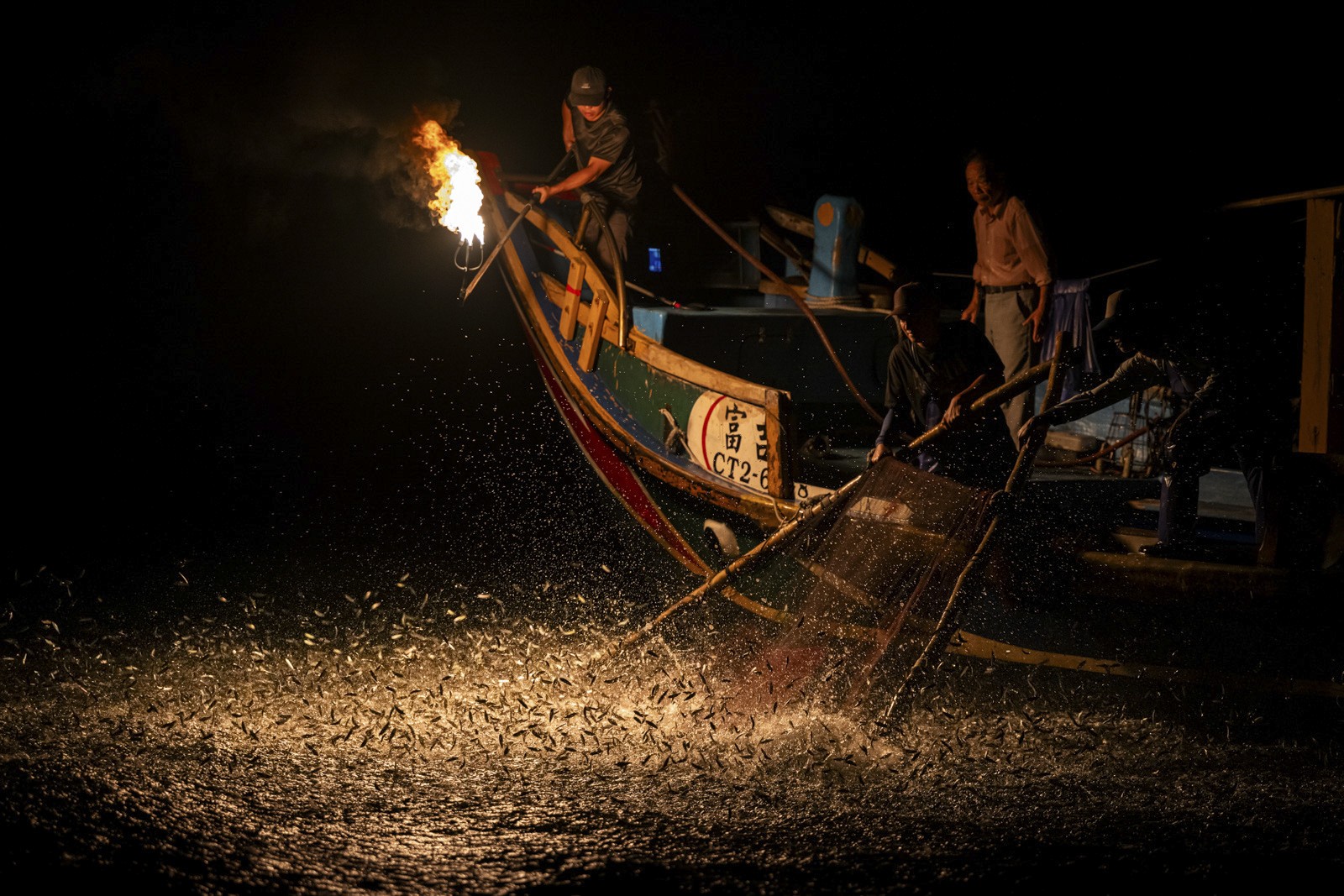 © Sirachai Arunrugstichai / Ocean Photographer of the YearFinalist, Human Connection. “Fuji 268, one of the last fire-fishing boats, lights up a flame that startles the small species of sardine that they target in coastal waters, New Taipei, Taiwan. In 2023, Fuji 268 was the sole survivor of this fishing method, which is a national cultural heritage of Taiwan. The crew tries to preserve this tradition by partnering with tour operators in the surrounding area, and has developed its own educational program to help with the operating cost and declining fish.”
© Sirachai Arunrugstichai / Ocean Photographer of the YearFinalist, Human Connection. “Fuji 268, one of the last fire-fishing boats, lights up a flame that startles the small species of sardine that they target in coastal waters, New Taipei, Taiwan. In 2023, Fuji 268 was the sole survivor of this fishing method, which is a national cultural heritage of Taiwan. The crew tries to preserve this tradition by partnering with tour operators in the surrounding area, and has developed its own educational program to help with the operating cost and declining fish.”
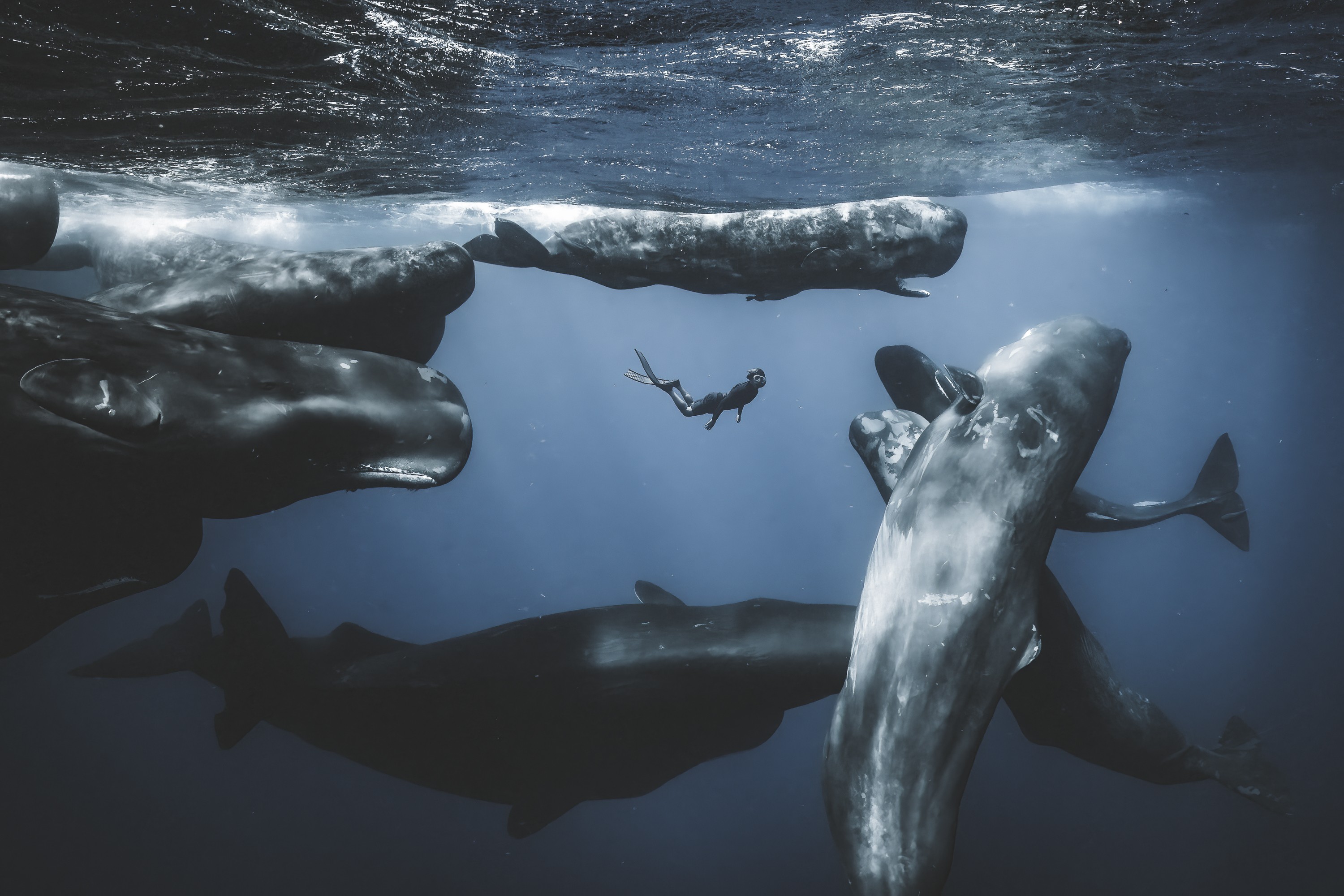 © Romain Barats / Ocean Photographer of the YearFinalist, Adventure. “I’ve been fond of whales since my childhood, so I was really excited to get the opportunity to swim with sperm whales for the first time in my life. I was extremely lucky on my first day at sea. We saw 15 whales socializing for 45 minutes or so. The sea was rough but when you get to see something like that, you quickly forget the conditions. There were three of us in the water, spread out due to the action. The whales began to move out when I suddenly saw my buddy free diving from afar. I managed to get a shot of him surrounded by whales.”
© Romain Barats / Ocean Photographer of the YearFinalist, Adventure. “I’ve been fond of whales since my childhood, so I was really excited to get the opportunity to swim with sperm whales for the first time in my life. I was extremely lucky on my first day at sea. We saw 15 whales socializing for 45 minutes or so. The sea was rough but when you get to see something like that, you quickly forget the conditions. There were three of us in the water, spread out due to the action. The whales began to move out when I suddenly saw my buddy free diving from afar. I managed to get a shot of him surrounded by whales.”
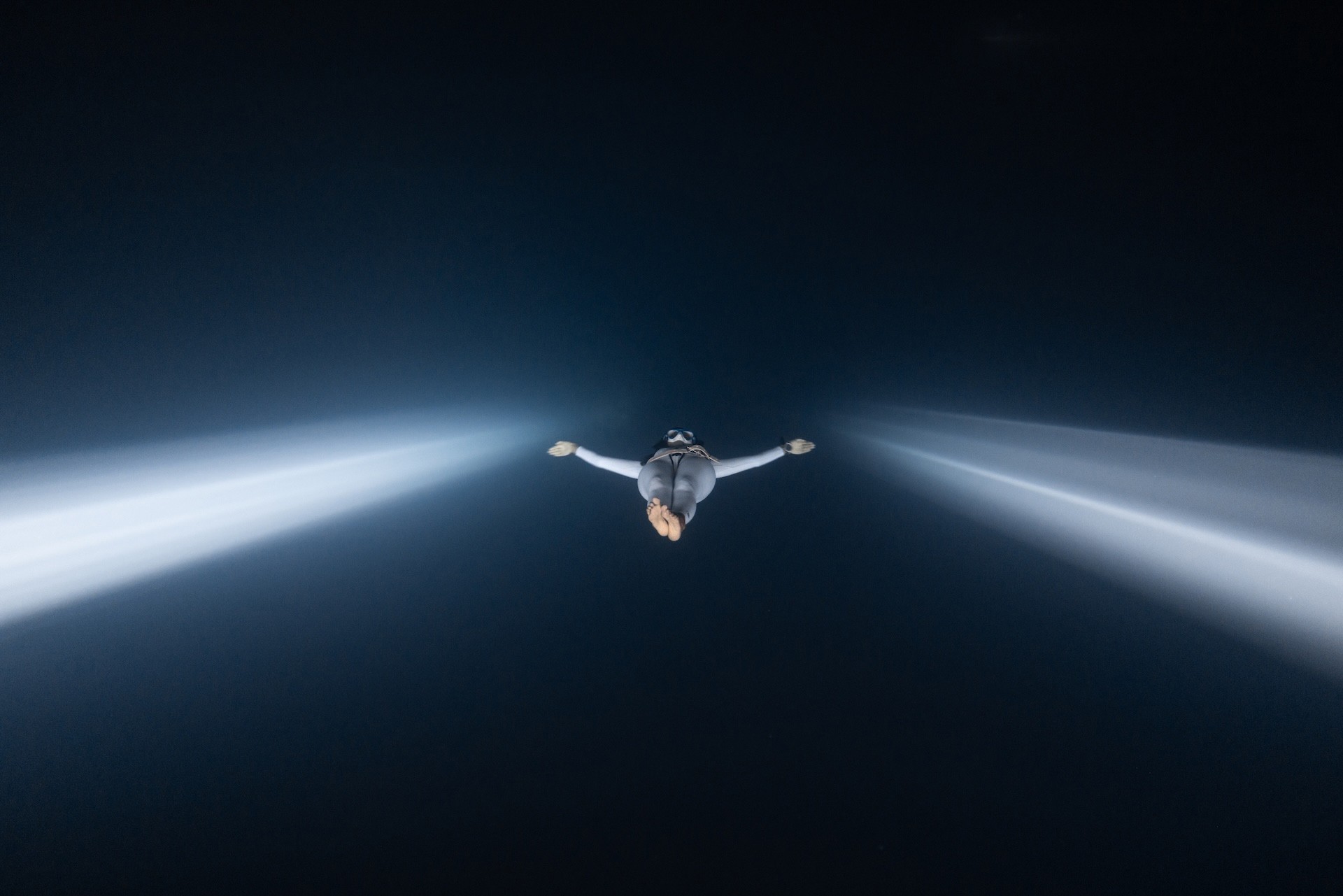 © Luis Arpa / Ocean Photographer of the YearFinalist, Fine Art. “This is an image of a juvenile pinnate batfish captured using a slow shutter speed, snooted light, and deliberate camera panning to create motion and drama. Juveniles are known for striking black bodies outlined in vibrant orange—a coloration lost within months. I encountered this restless subject in the tropical waters of Indonesia’s Lembeh Strait.”
© Luis Arpa / Ocean Photographer of the YearFinalist, Fine Art. “This is an image of a juvenile pinnate batfish captured using a slow shutter speed, snooted light, and deliberate camera panning to create motion and drama. Juveniles are known for striking black bodies outlined in vibrant orange—a coloration lost within months. I encountered this restless subject in the tropical waters of Indonesia’s Lembeh Strait.”
 © Daan Verhoeven / Ocean Photographer of the YearFinalist, Adventure. “The free diver Surya Lecona Moctezuma dives down in between light beams in a Mexican cenote. I was looking for the contrast between not just the light and dark areas, but the sudden appearance of linear geometry in a natural setting, so I asked Surya to dive right in the middle of the beams. I dived after her, positioning myself directly above.”
© Daan Verhoeven / Ocean Photographer of the YearFinalist, Adventure. “The free diver Surya Lecona Moctezuma dives down in between light beams in a Mexican cenote. I was looking for the contrast between not just the light and dark areas, but the sudden appearance of linear geometry in a natural setting, so I asked Surya to dive right in the middle of the beams. I dived after her, positioning myself directly above.”
 © Alexis Chappuis / Ocean Photographer of the YearFinalist, Wildlife. Thousands of skeleton shrimps have entirely colonized a Gorgonian coral in North Sulawesi, Indonesia. “These crustaceans are actually not true shrimps but amphipods of the genus Caprella. Because these animals feed on plankton, they should not affect their host. However, in this case, there were so many of them that they may be the reason the Gorgonian’s polyps were all retracted.”
© Alexis Chappuis / Ocean Photographer of the YearFinalist, Wildlife. Thousands of skeleton shrimps have entirely colonized a Gorgonian coral in North Sulawesi, Indonesia. “These crustaceans are actually not true shrimps but amphipods of the genus Caprella. Because these animals feed on plankton, they should not affect their host. However, in this case, there were so many of them that they may be the reason the Gorgonian’s polyps were all retracted.”
 © Matthew Watkinson / Ocean Photographer of the YearFinalist, Wildlife. “I’d definitely have dropped the fish. I’d probably have given this greater black-backed gull my money, watch, and keys too, such was the loud, determined ferocity of its attack. When puffins are feeding chicks, gulls cruise around nesting sites looking for adults returning with fish to harass and rob.”
© Matthew Watkinson / Ocean Photographer of the YearFinalist, Wildlife. “I’d definitely have dropped the fish. I’d probably have given this greater black-backed gull my money, watch, and keys too, such was the loud, determined ferocity of its attack. When puffins are feeding chicks, gulls cruise around nesting sites looking for adults returning with fish to harass and rob.”
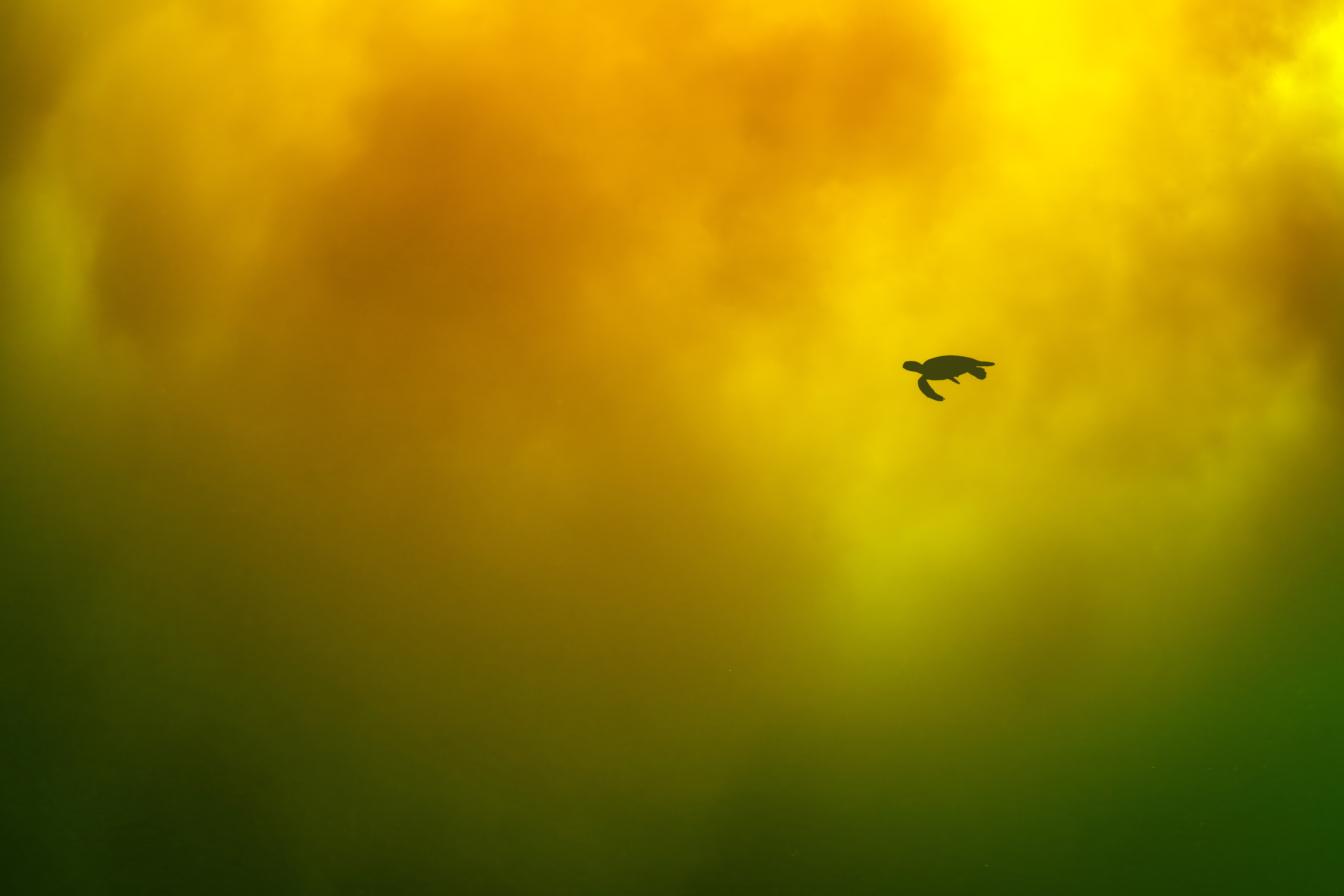 © Hitomi Tsuchiya / Ocean Photographer of the YearFinalist, Fine Art. “This image was taken near Mount Iwo on Satsuma-Iojima Island, where the underwater aurora can be seen. The volcano spews out iron-rich substances not only from aboveground but also from the ocean floor, creating these rich colors. I hope this images pushes people to think about the connection between global warming and marine conservation. We must preserve these mysterious and fantastical landscapes, created by land and sea, for future generations.”
© Hitomi Tsuchiya / Ocean Photographer of the YearFinalist, Fine Art. “This image was taken near Mount Iwo on Satsuma-Iojima Island, where the underwater aurora can be seen. The volcano spews out iron-rich substances not only from aboveground but also from the ocean floor, creating these rich colors. I hope this images pushes people to think about the connection between global warming and marine conservation. We must preserve these mysterious and fantastical landscapes, created by land and sea, for future generations.”
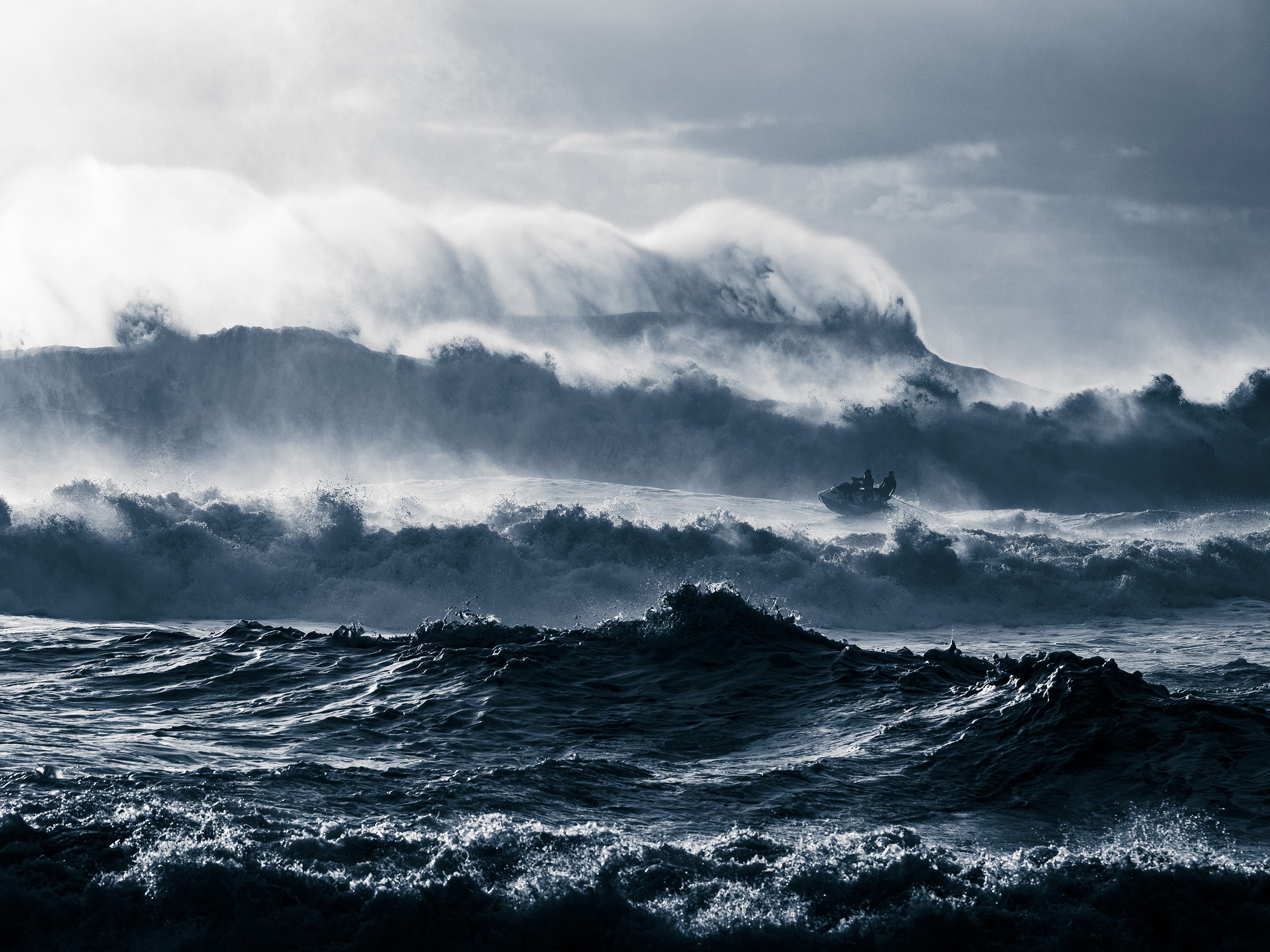 © Ben Thouard / Ocean Photographer of the YearFinalist, Adventure. “A rough day at Nazaré. The wind was blowing from the north, which makes the surf tricky. Not many surfers went out, but Justine Dupont and Eric Rebiere, whom I was there to shoot, decided to give it a try. It was the end of the afternoon; the light was interesting from the beach, rather than from the usual cliff view. It was hard to shoot anything because of the big sets and the salt water in the air. But, eventually, this moment happened.”
© Ben Thouard / Ocean Photographer of the YearFinalist, Adventure. “A rough day at Nazaré. The wind was blowing from the north, which makes the surf tricky. Not many surfers went out, but Justine Dupont and Eric Rebiere, whom I was there to shoot, decided to give it a try. It was the end of the afternoon; the light was interesting from the beach, rather than from the usual cliff view. It was hard to shoot anything because of the big sets and the salt water in the air. But, eventually, this moment happened.”
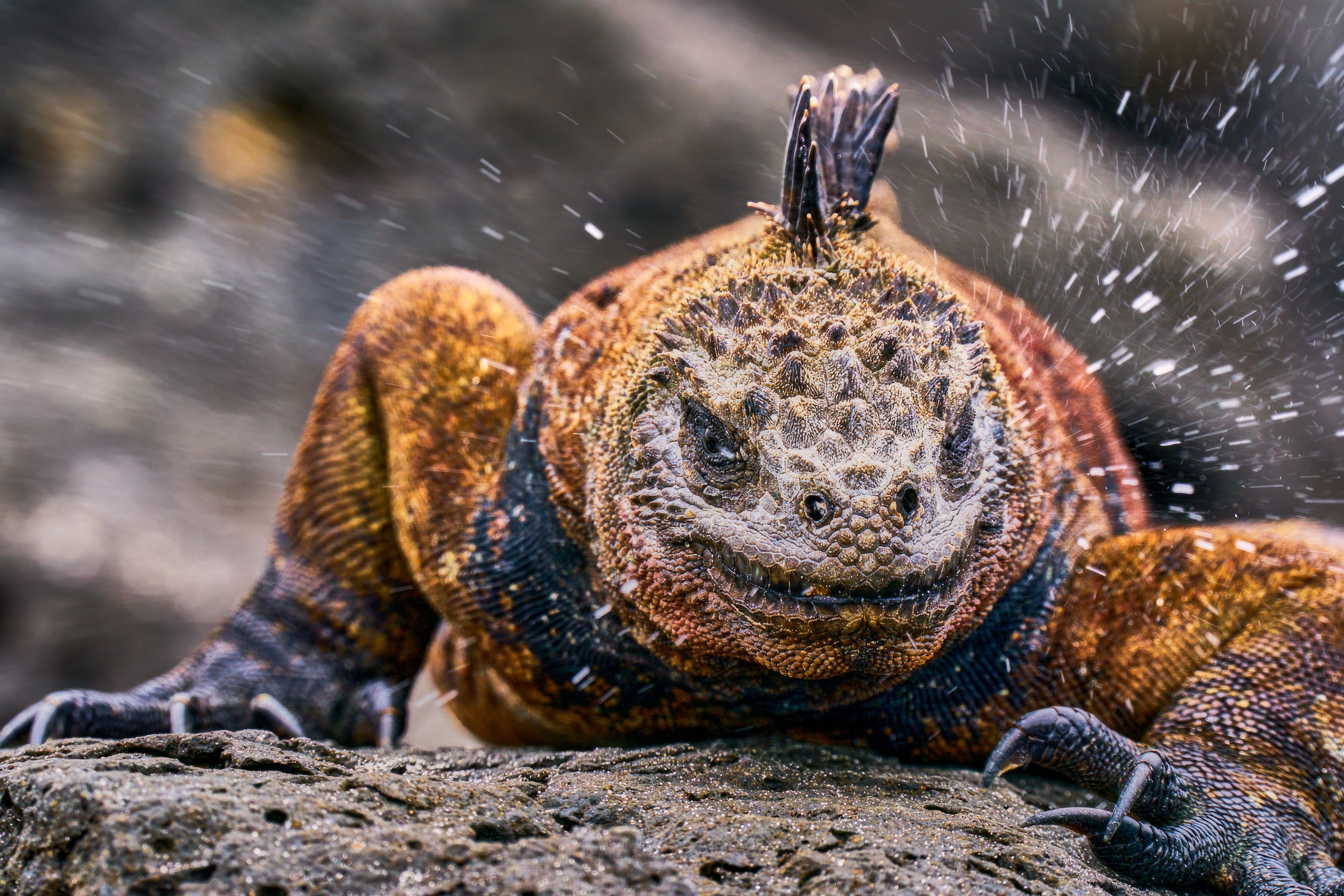 © Arturo de Frias / Ocean Photographer of the YearFinalist, Wildlife. “Marine iguanas, endemic to the Galapagos, are one of the most iconic species in the archipelago. They are like miniature dragons, especially in low-angle, eye-to-eye portraits like this one. This individual was resting on the black rocks of Santa Cruz Island, sunbathing after a foraging dive. By sheer luck, I photographed the split second in which it was sneezing the excess salt it had absorbed during its dive. Sneezing is not a discomfort signal; it is perfectly natural behavior.”
© Arturo de Frias / Ocean Photographer of the YearFinalist, Wildlife. “Marine iguanas, endemic to the Galapagos, are one of the most iconic species in the archipelago. They are like miniature dragons, especially in low-angle, eye-to-eye portraits like this one. This individual was resting on the black rocks of Santa Cruz Island, sunbathing after a foraging dive. By sheer luck, I photographed the split second in which it was sneezing the excess salt it had absorbed during its dive. Sneezing is not a discomfort signal; it is perfectly natural behavior.”
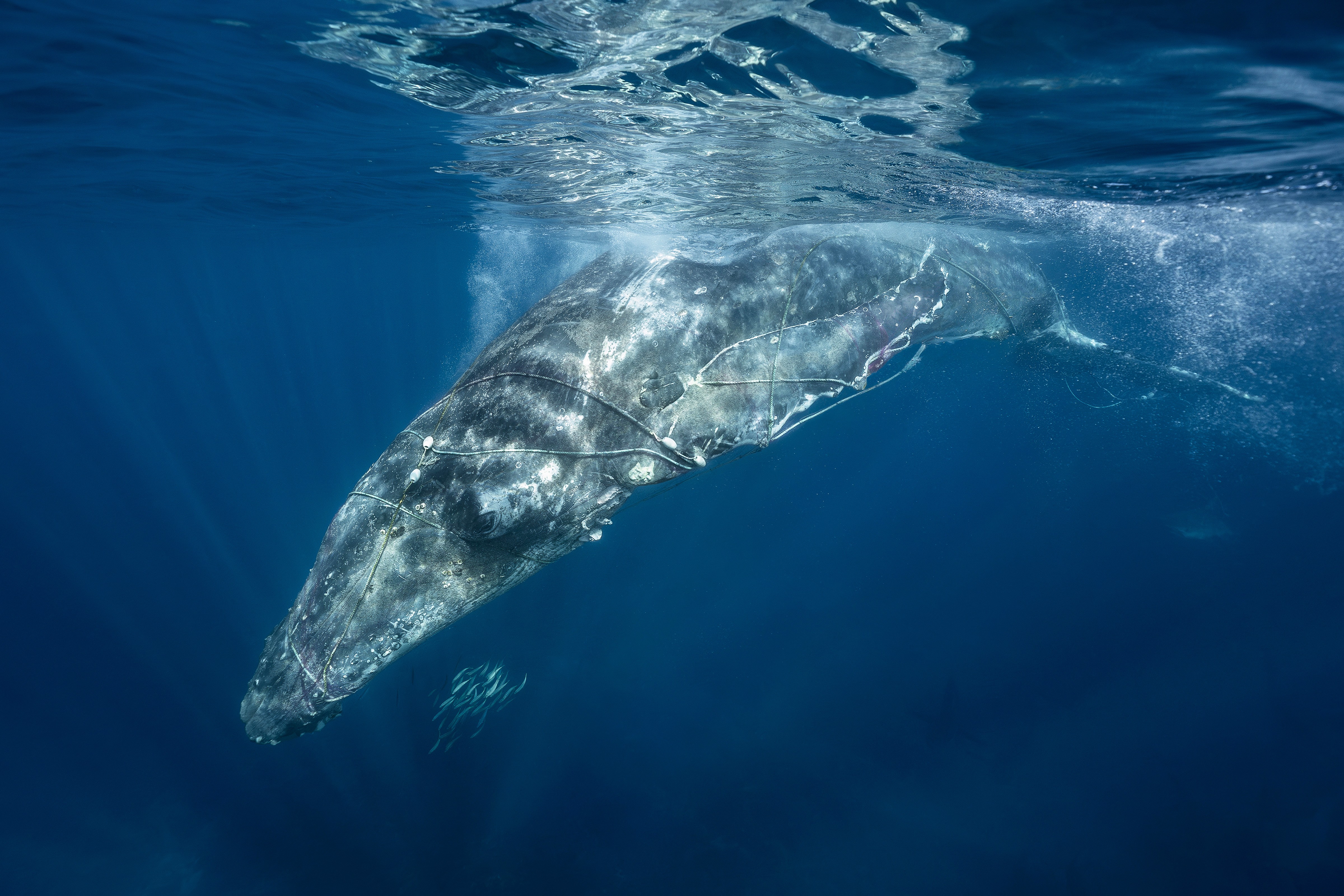 © Claudio Moreno Madrid / Ocean Photographer of the YearFinalist, Impact. “This image represents one of the most profound moments of my life. It was my first year in Exmouth, to which I’d been drawn by the stories about Ningaloo Reef. With just a kayak and an obsession with the ocean, I explored the reef weekly. On this particular day, a friend and I had gone to Turquoise Bay, where we encountered this humpback whale, hopelessly entangled in fishing nets, chased by dozens of sharks. In a moment of desperation, knowing it was beyond us to help, I tried to document the situation. I hope this image turns tragedy into awareness, inspiring real change for our ocean.”
© Claudio Moreno Madrid / Ocean Photographer of the YearFinalist, Impact. “This image represents one of the most profound moments of my life. It was my first year in Exmouth, to which I’d been drawn by the stories about Ningaloo Reef. With just a kayak and an obsession with the ocean, I explored the reef weekly. On this particular day, a friend and I had gone to Turquoise Bay, where we encountered this humpback whale, hopelessly entangled in fishing nets, chased by dozens of sharks. In a moment of desperation, knowing it was beyond us to help, I tried to document the situation. I hope this image turns tragedy into awareness, inspiring real change for our ocean.”
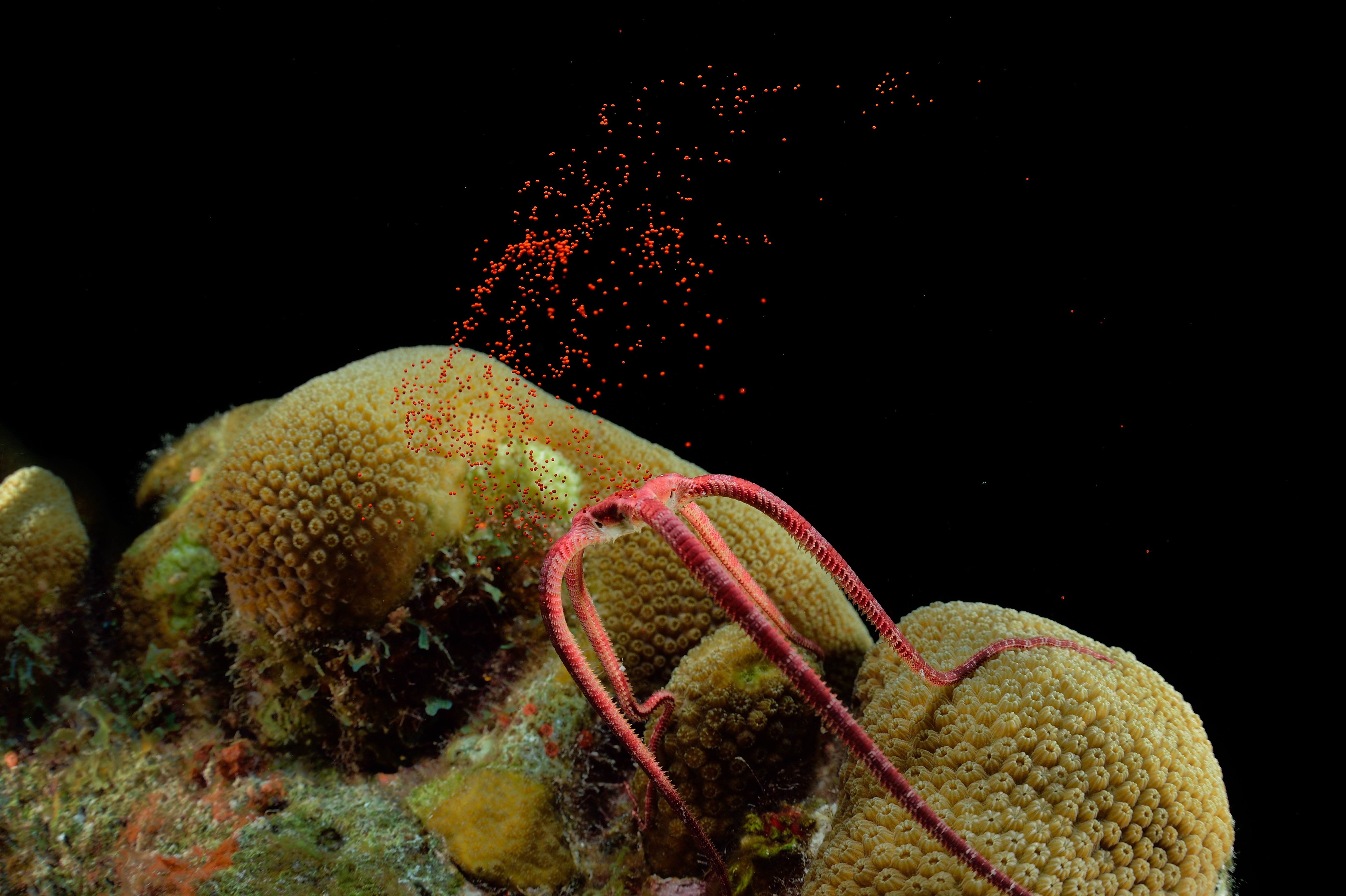 © Solvin Zankl / Ocean Photographer of the YearFinalist, Hope. “On the Caribbean island of Bonaire, a female brittle star rears up on the tips of its arms on top of a coral to release its eggs, a few nights after the full moon. The process is synchronized by the moon so that the eggs are fertilized by sperm from males in the open water and a new generation is born.”
© Solvin Zankl / Ocean Photographer of the YearFinalist, Hope. “On the Caribbean island of Bonaire, a female brittle star rears up on the tips of its arms on top of a coral to release its eggs, a few nights after the full moon. The process is synchronized by the moon so that the eggs are fertilized by sperm from males in the open water and a new generation is born.”
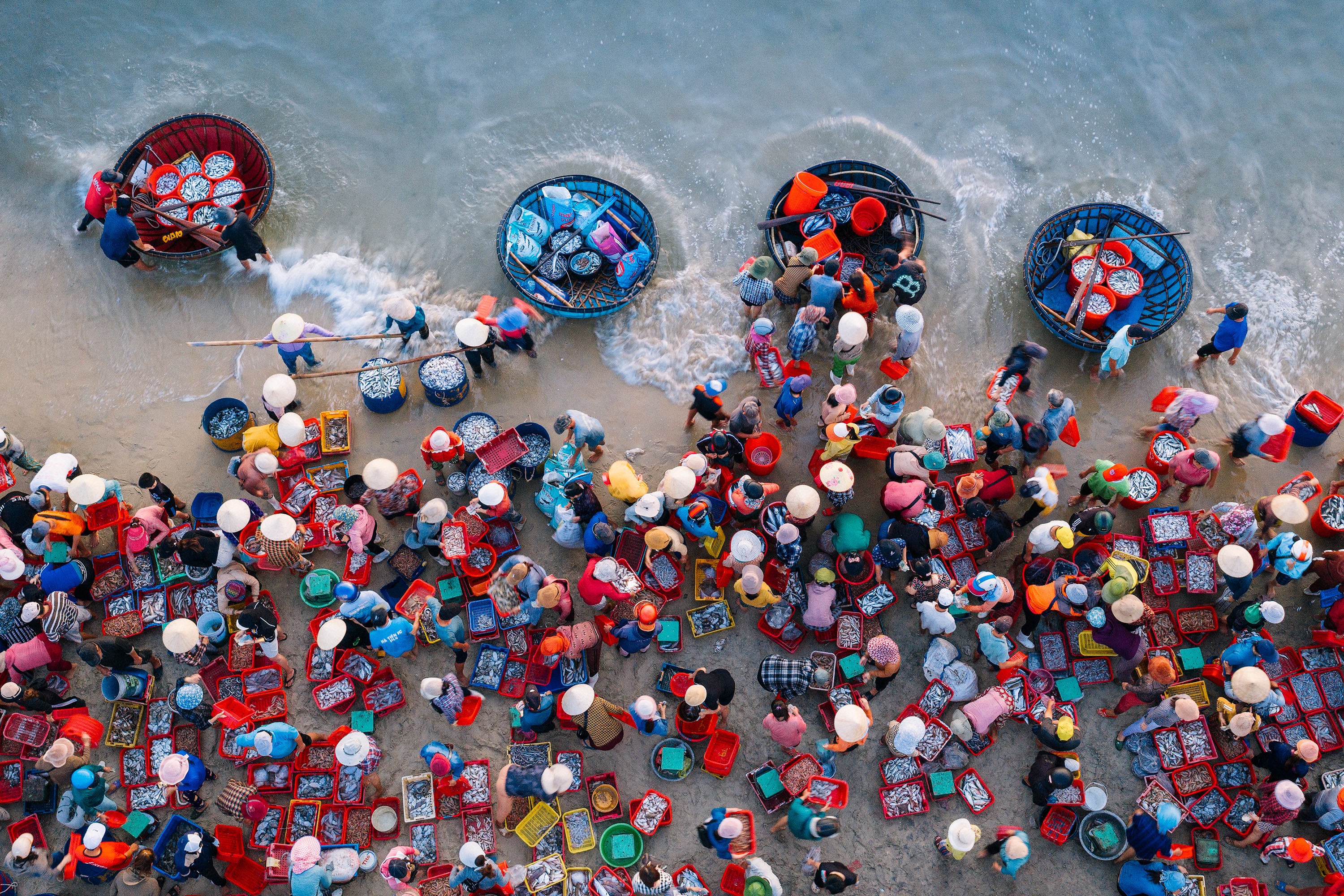 © Natnattcha Chaturapitamorn / Ocean Photographer of the YearFinalist, Human Connection. “Each morning before sunrise at Tam Tien beach, the shoreline comes alive with a flurry of activity. Clusters of wooden fishing boats anchor offshore, forming a floating fleet. From there, teams of fishermen in round basket boats skillfully navigate through the waves, ferrying barrels of freshly caught seafood to the shore. On the beach, families of fishermen and wholesale traders wait eagerly, ready to sort and purchase the catch.”
© Natnattcha Chaturapitamorn / Ocean Photographer of the YearFinalist, Human Connection. “Each morning before sunrise at Tam Tien beach, the shoreline comes alive with a flurry of activity. Clusters of wooden fishing boats anchor offshore, forming a floating fleet. From there, teams of fishermen in round basket boats skillfully navigate through the waves, ferrying barrels of freshly caught seafood to the shore. On the beach, families of fishermen and wholesale traders wait eagerly, ready to sort and purchase the catch.”
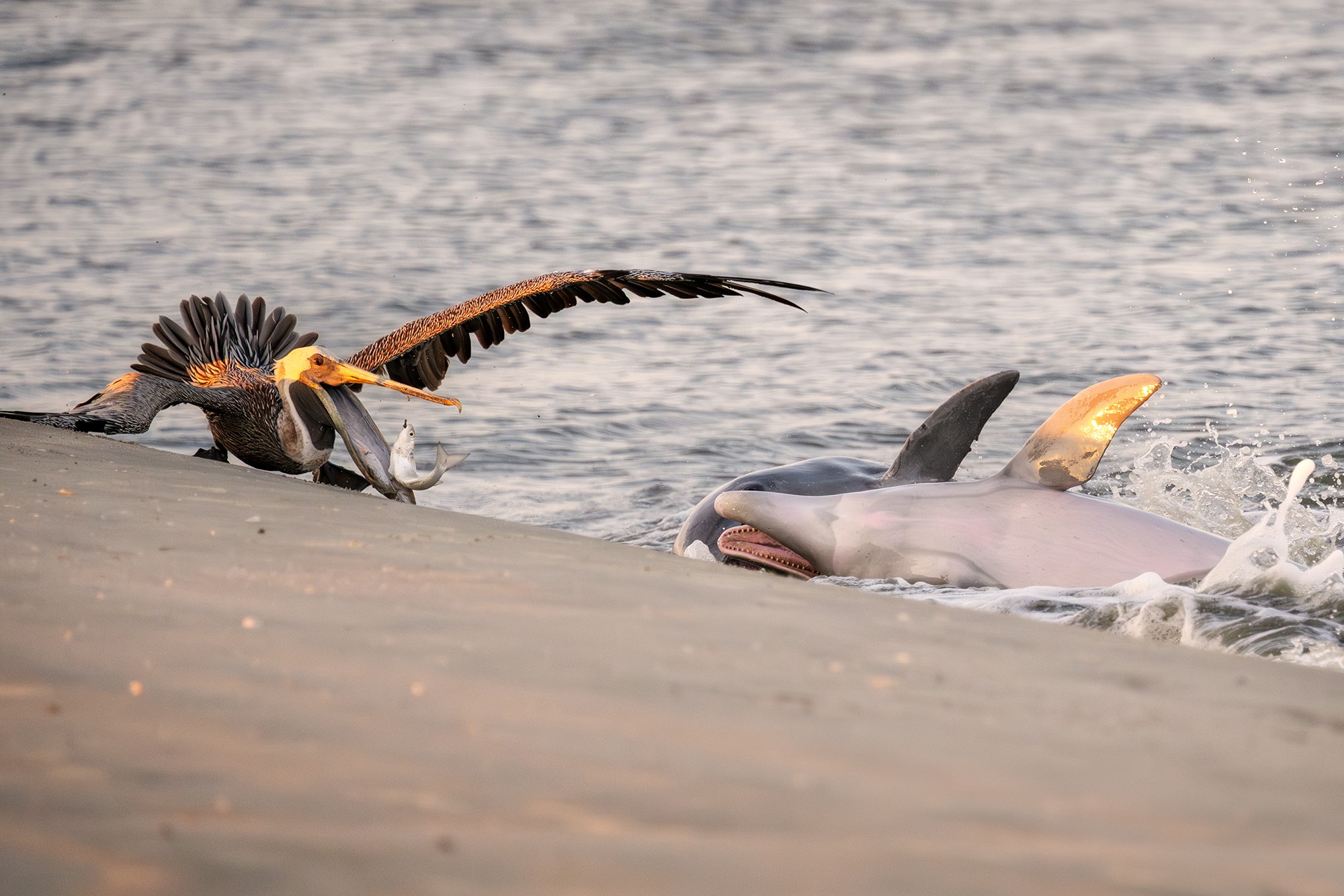 © Kat Zhou / Ocean Photographer of the YearFinalist, Wildlife. An opportunistic pelican swoops in to steal a fish from strand-feeding dolphins. “When dolphins strand-feed, they corral baitballs of fish and rush them onto the shore. Pelicans usually lurk nearby, hoping to take advantage of an easy meal. Following the pelicans is usually a good indicator of where along the beach the dolphins might strand next. Though about 350 dolphins call South Carolina home, this rare strand-feeding behavior is performed by only a few members of one pod.”
© Kat Zhou / Ocean Photographer of the YearFinalist, Wildlife. An opportunistic pelican swoops in to steal a fish from strand-feeding dolphins. “When dolphins strand-feed, they corral baitballs of fish and rush them onto the shore. Pelicans usually lurk nearby, hoping to take advantage of an easy meal. Following the pelicans is usually a good indicator of where along the beach the dolphins might strand next. Though about 350 dolphins call South Carolina home, this rare strand-feeding behavior is performed by only a few members of one pod.”
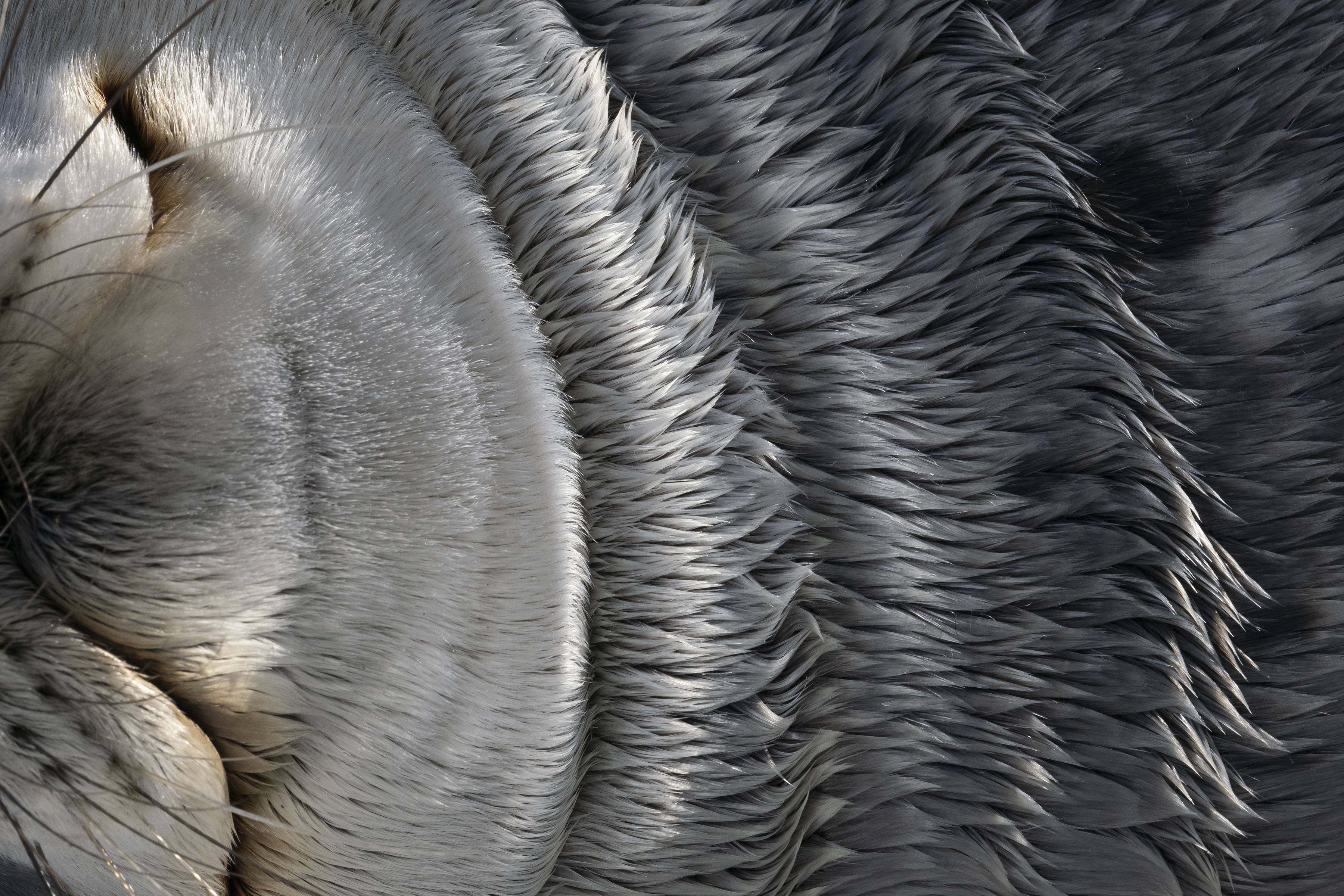 © Scott Portelli / Ocean Photographer of the YearFinalist, Fine Art. “Weddell seals thrive in the harshest environment on the planet. These large mammals, distributed throughout Antarctica, have a thick layer of fur and blubber that acts as both a food reserve and insulation. The finely packed fur allows them to survive in temperatures as low as -60 degrees Celsius. This image was taken after this seal had hauled itself out of the water and onto the ice floe to rest.”
© Scott Portelli / Ocean Photographer of the YearFinalist, Fine Art. “Weddell seals thrive in the harshest environment on the planet. These large mammals, distributed throughout Antarctica, have a thick layer of fur and blubber that acts as both a food reserve and insulation. The finely packed fur allows them to survive in temperatures as low as -60 degrees Celsius. This image was taken after this seal had hauled itself out of the water and onto the ice floe to rest.”
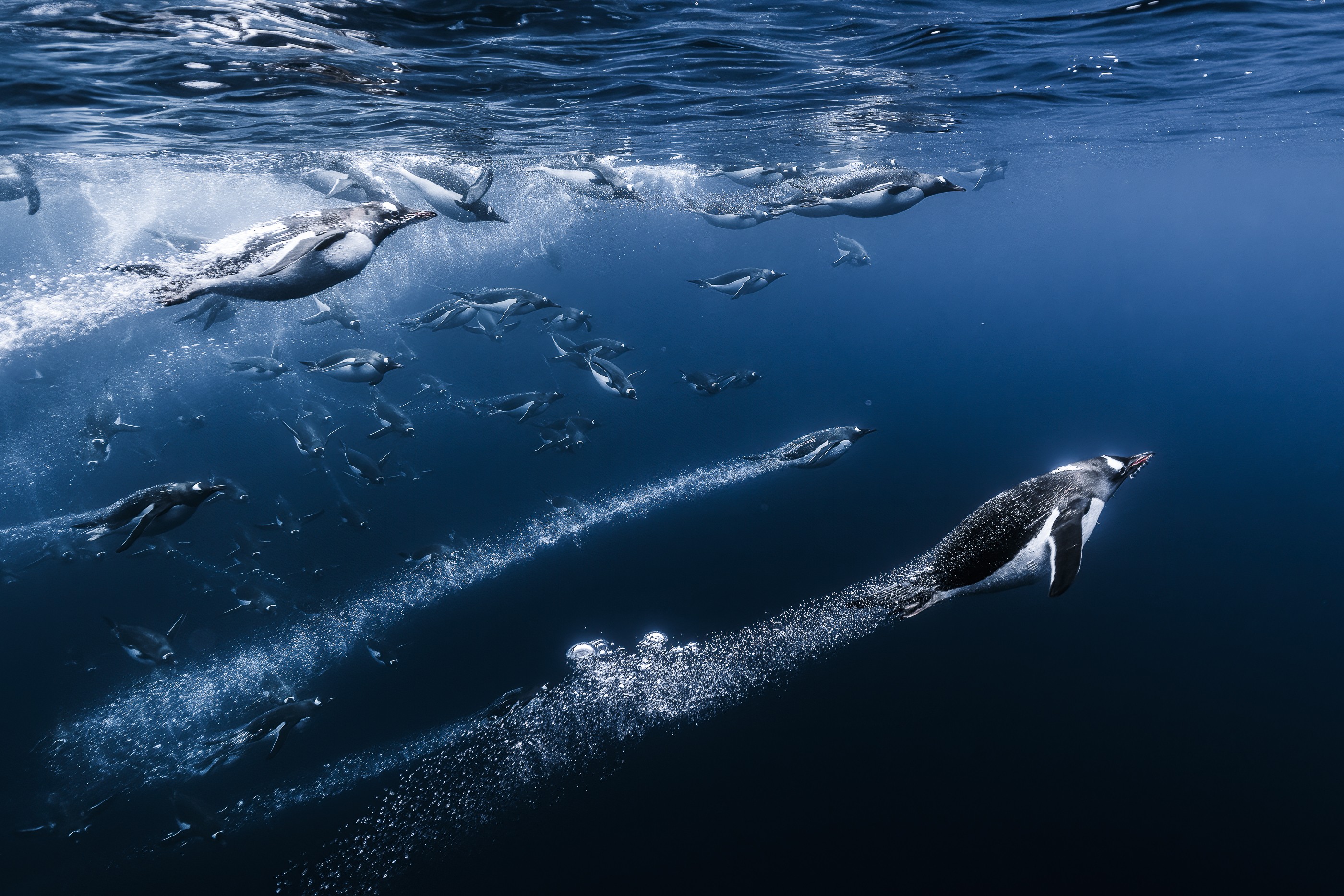 © Romain Barats / Ocean Photographer of the YearFinalist, Wildlife. “It’s amazing how fast gentoo penguins are able to build a colony during the austral summer in the Antarctic peninsula. Port Charcot is usually a good place for this. This sheltered bay surrounded by mountains and icebergs is a perfect base for gentoos. We anchored our sailboat in this bay for three days, near the colony. We got in the water every day to enjoy the spectacle of these highly curious birds, who came to check on us so many times. Clumsy on land, these birds are fast and agile in the water.”
© Romain Barats / Ocean Photographer of the YearFinalist, Wildlife. “It’s amazing how fast gentoo penguins are able to build a colony during the austral summer in the Antarctic peninsula. Port Charcot is usually a good place for this. This sheltered bay surrounded by mountains and icebergs is a perfect base for gentoos. We anchored our sailboat in this bay for three days, near the colony. We got in the water every day to enjoy the spectacle of these highly curious birds, who came to check on us so many times. Clumsy on land, these birds are fast and agile in the water.”
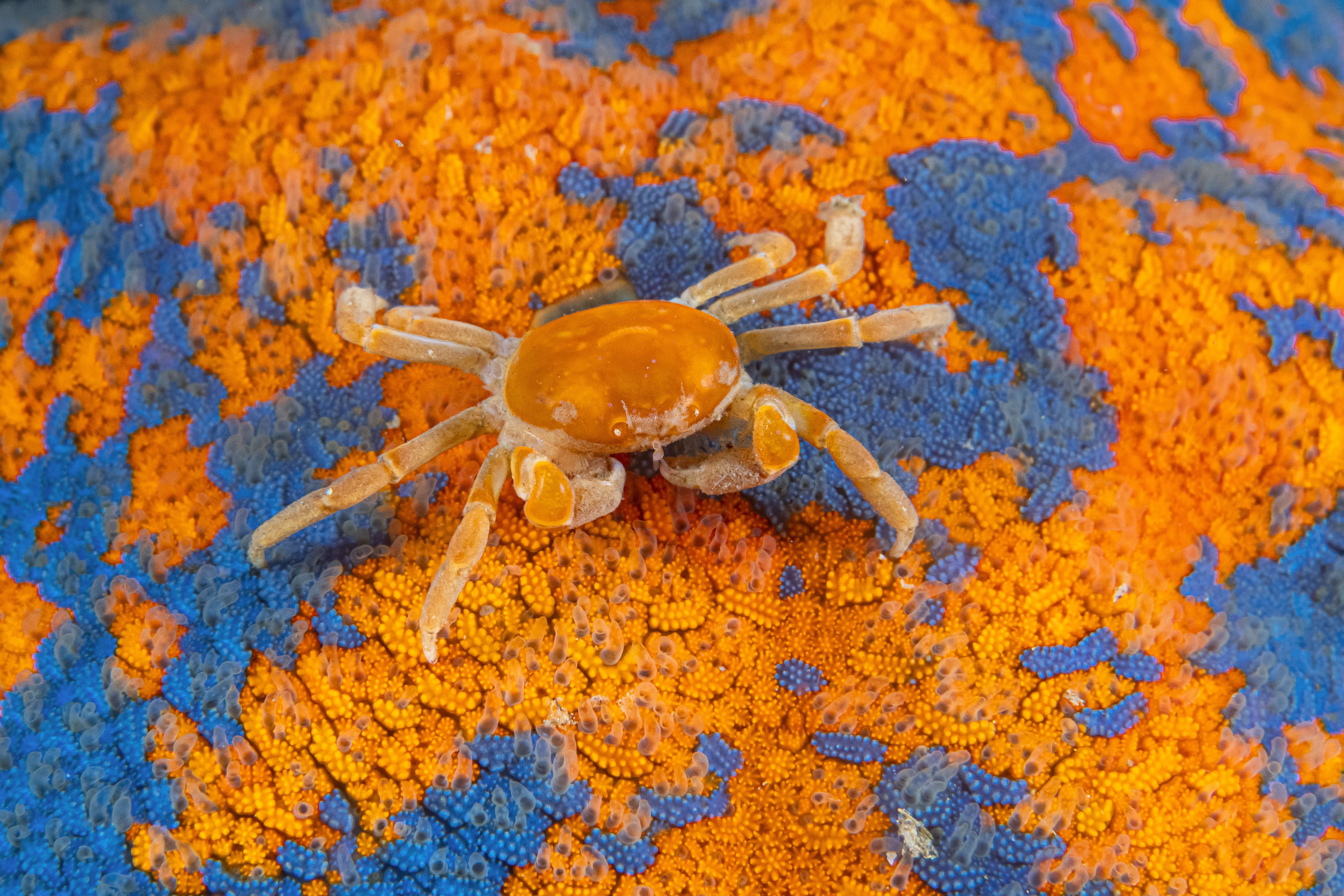 © Andray Shpatak / Ocean Photographer of the YearFinalist, Wildlife. “I’ve been diving in the Rudnaya Bay area for more than 40 years, but I’ve never seen a pea crab. I was lucky. Pea crabs spend most of their lives inside the shells of gray mussels, a symbiotic relationship that ends only when the mussel or crab dies. I can only assume that this pea crab was looking for a home when I managed to photograph it.”
© Andray Shpatak / Ocean Photographer of the YearFinalist, Wildlife. “I’ve been diving in the Rudnaya Bay area for more than 40 years, but I’ve never seen a pea crab. I was lucky. Pea crabs spend most of their lives inside the shells of gray mussels, a symbiotic relationship that ends only when the mussel or crab dies. I can only assume that this pea crab was looking for a home when I managed to photograph it.”
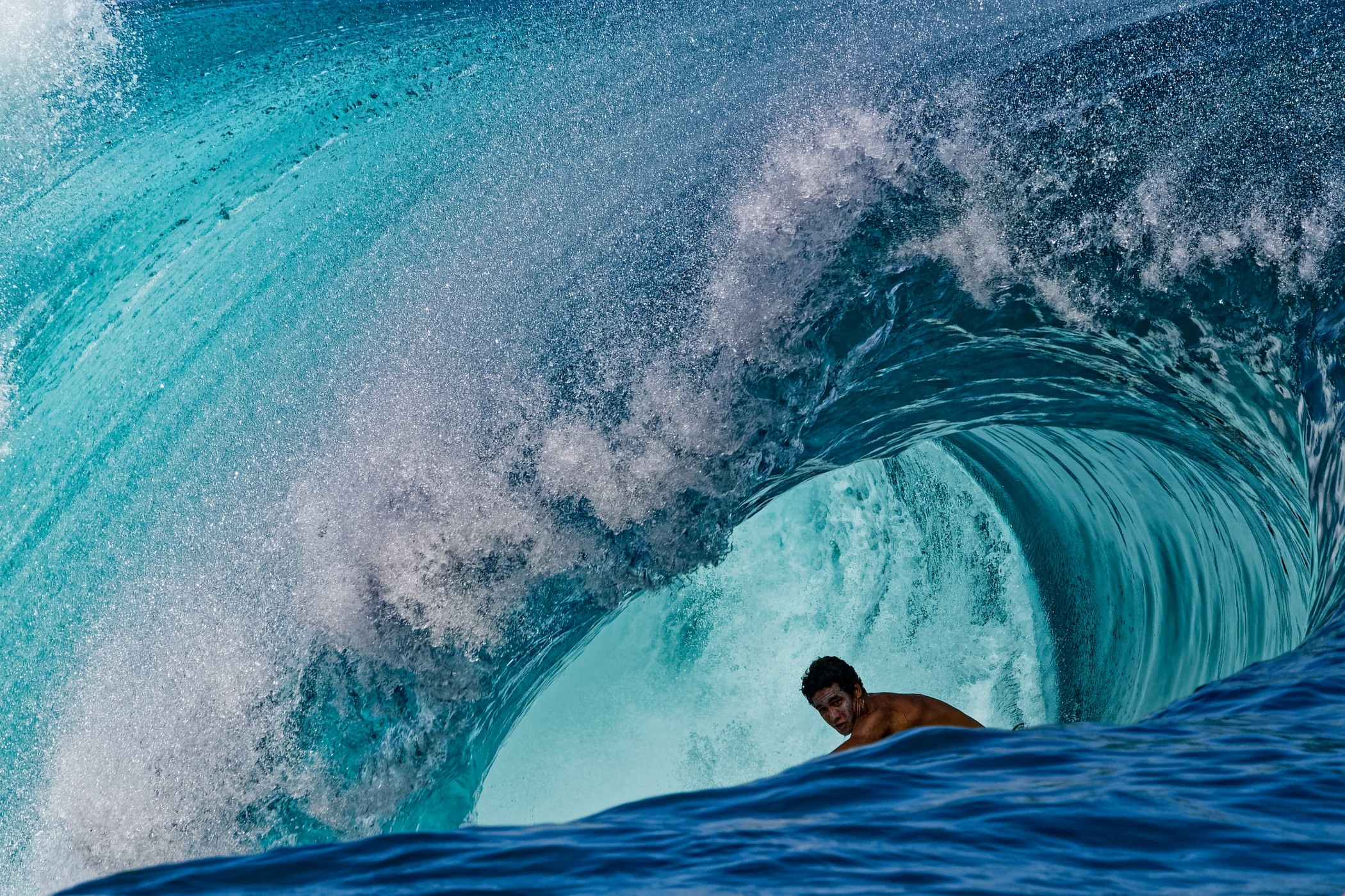 © Marc Lenfant / Ocean Photographer of the YearFinalist, Adventure. “At the mythical Teahupoʻo, a wave sculpted by the power of the ocean forms a perfect tube framing the surfer.”
© Marc Lenfant / Ocean Photographer of the YearFinalist, Adventure. “At the mythical Teahupoʻo, a wave sculpted by the power of the ocean forms a perfect tube framing the surfer.”
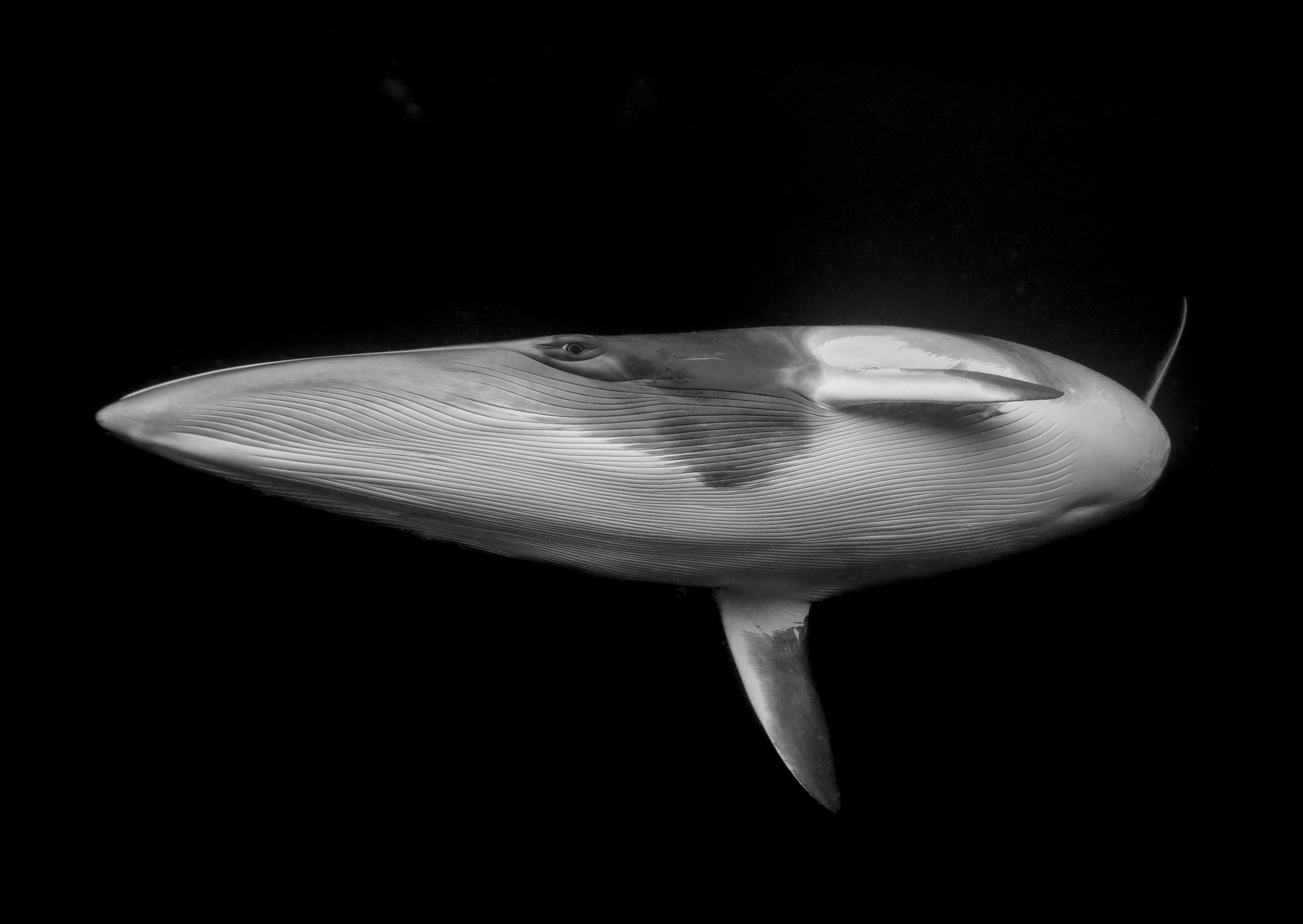 © Marcia Riederer / Ocean Photographer of the YearFinalist, Fine Art. “Dwarf minke whales are known to visit the northern Great Barrier Reef during the winter, making it the only known predictable aggregation of these whales in the world. These curious giants approach swimmers with an almost playful curiosity. Floating in the turquoise water, you watch a sleek, dark body glide effortlessly toward you, its eye meeting yours in a moment of connection. The whales seem to acknowledge your presence, circling and interacting with you.”
© Marcia Riederer / Ocean Photographer of the YearFinalist, Fine Art. “Dwarf minke whales are known to visit the northern Great Barrier Reef during the winter, making it the only known predictable aggregation of these whales in the world. These curious giants approach swimmers with an almost playful curiosity. Floating in the turquoise water, you watch a sleek, dark body glide effortlessly toward you, its eye meeting yours in a moment of connection. The whales seem to acknowledge your presence, circling and interacting with you.”
To see all of the finalists, be sure to visit Oceanographic Magazine’s full gallery. Winners will be announced in September.
The post Ocean Photographer of the Year 2025 Finalists appeared first on The Atlantic.






































